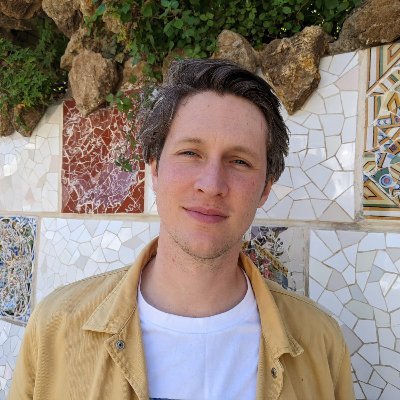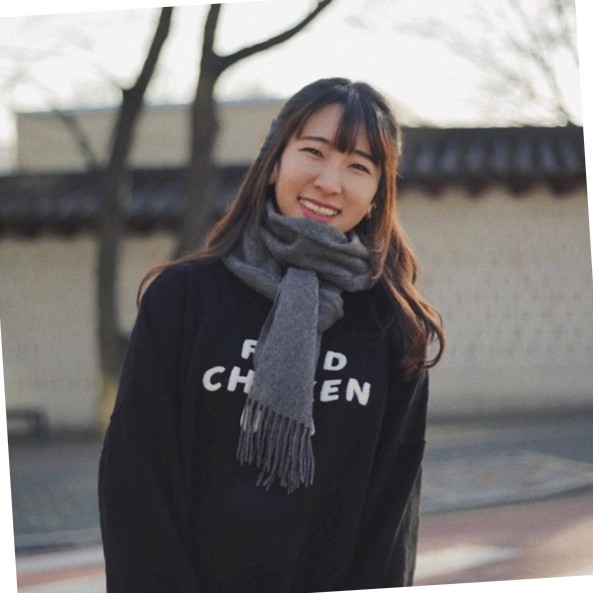


Published in Hardware
Published in Hardware
Published in Hardware
Image credit by Yum Yum
Image credit by Yum Yum
Image credit by Yum Yum



John Cashman
John Cashman
John Cashman
Community Support at Framer
Community Support at Framer
Community Support at Framer
September 1, 2022
September 1, 2022
September 1, 2022
Growing a Distributed Product Design Team
Growing a Distributed Product Design Team
Growing a Distributed Product Design Team
The pandemic presented us with a whole new challenge in growing this team.
The pandemic presented us with a whole new challenge in growing this team.
The pandemic presented us with a whole new challenge in growing this team.
When I moved to Stockholm at the beginning of 2020, I was tasked with expanding the internal tools team in Spotify’s Platform Mission. We already had a few amazing designers working on tools in New York and Stockholm, but if we wanted to establish design practices that make an impact and help our engineering organization to be more human-centric, we needed to grow. But, like most plans in 2020, we were forced to reassess when everyone at Spotify was invited to stay home due to COVID-19.
Iam Senior Design Manager in Platform, an organization with about 600 folks mostly working on things that aren’t visible to Spotify listeners. We’re the people who build internal tools for learning and speed and to support the fundamental capabilities of Spotify.
Our team of product designers is embedded in different groups within Platform, designing for Data and Insights, Experimentation, Machine Learning, Tools for Web and Mobile Infrastructure, Security, and Spotify’s homegrown developer portal, Backstage.io.
The pandemic presented us with a whole new challenge in growing this team: How do we achieve our original goal of creating a highly collaborative and efficient product design team while everyone is remote?
Growing a distributed team
A distributed team is one that works together but from different locations and (sometimes) embedded in other teams. Setting up a distributed team with a lot of new hires, we knew we needed to have robust processes for growth so people could work together efficiently from the get-go.
We focused our efforts on creating a hiring and onboarding process that allowed us to get to know candidates quickly, set a solid foundation for collaboration, and cultivated a culture of empathy and self-care among team members.
Virtual Hiring
Because distributed teams work across time zones, and on a variety of parallel projects, they do best when members are self-motivated, highly organised, and really great at communicating. These qualities (along with all the usual: a passion for design, strong past experience, and personal success metrics) formed the framework for the types of designers we were looking for.
In order to find a strong lineup of candidates fitting this profile, we quickly learned how important it was to have a good relationship with talent acquisition and to establish honest and clear communication with them early on.
When I moved to Stockholm at the beginning of 2020, I was tasked with expanding the internal tools team in Spotify’s Platform Mission. We already had a few amazing designers working on tools in New York and Stockholm, but if we wanted to establish design practices that make an impact and help our engineering organization to be more human-centric, we needed to grow. But, like most plans in 2020, we were forced to reassess when everyone at Spotify was invited to stay home due to COVID-19.
Iam Senior Design Manager in Platform, an organization with about 600 folks mostly working on things that aren’t visible to Spotify listeners. We’re the people who build internal tools for learning and speed and to support the fundamental capabilities of Spotify.
Our team of product designers is embedded in different groups within Platform, designing for Data and Insights, Experimentation, Machine Learning, Tools for Web and Mobile Infrastructure, Security, and Spotify’s homegrown developer portal, Backstage.io.
The pandemic presented us with a whole new challenge in growing this team: How do we achieve our original goal of creating a highly collaborative and efficient product design team while everyone is remote?
Growing a distributed team
A distributed team is one that works together but from different locations and (sometimes) embedded in other teams. Setting up a distributed team with a lot of new hires, we knew we needed to have robust processes for growth so people could work together efficiently from the get-go.
We focused our efforts on creating a hiring and onboarding process that allowed us to get to know candidates quickly, set a solid foundation for collaboration, and cultivated a culture of empathy and self-care among team members.
Virtual Hiring
Because distributed teams work across time zones, and on a variety of parallel projects, they do best when members are self-motivated, highly organised, and really great at communicating. These qualities (along with all the usual: a passion for design, strong past experience, and personal success metrics) formed the framework for the types of designers we were looking for.
In order to find a strong lineup of candidates fitting this profile, we quickly learned how important it was to have a good relationship with talent acquisition and to establish honest and clear communication with them early on.
When I moved to Stockholm at the beginning of 2020, I was tasked with expanding the internal tools team in Spotify’s Platform Mission. We already had a few amazing designers working on tools in New York and Stockholm, but if we wanted to establish design practices that make an impact and help our engineering organization to be more human-centric, we needed to grow. But, like most plans in 2020, we were forced to reassess when everyone at Spotify was invited to stay home due to COVID-19.
Iam Senior Design Manager in Platform, an organization with about 600 folks mostly working on things that aren’t visible to Spotify listeners. We’re the people who build internal tools for learning and speed and to support the fundamental capabilities of Spotify.
Our team of product designers is embedded in different groups within Platform, designing for Data and Insights, Experimentation, Machine Learning, Tools for Web and Mobile Infrastructure, Security, and Spotify’s homegrown developer portal, Backstage.io.
The pandemic presented us with a whole new challenge in growing this team: How do we achieve our original goal of creating a highly collaborative and efficient product design team while everyone is remote?
Growing a distributed team
A distributed team is one that works together but from different locations and (sometimes) embedded in other teams. Setting up a distributed team with a lot of new hires, we knew we needed to have robust processes for growth so people could work together efficiently from the get-go.
We focused our efforts on creating a hiring and onboarding process that allowed us to get to know candidates quickly, set a solid foundation for collaboration, and cultivated a culture of empathy and self-care among team members.
Virtual Hiring
Because distributed teams work across time zones, and on a variety of parallel projects, they do best when members are self-motivated, highly organised, and really great at communicating. These qualities (along with all the usual: a passion for design, strong past experience, and personal success metrics) formed the framework for the types of designers we were looking for.
In order to find a strong lineup of candidates fitting this profile, we quickly learned how important it was to have a good relationship with talent acquisition and to establish honest and clear communication with them early on.
Continue Reading
Continue Reading
Continue Reading


